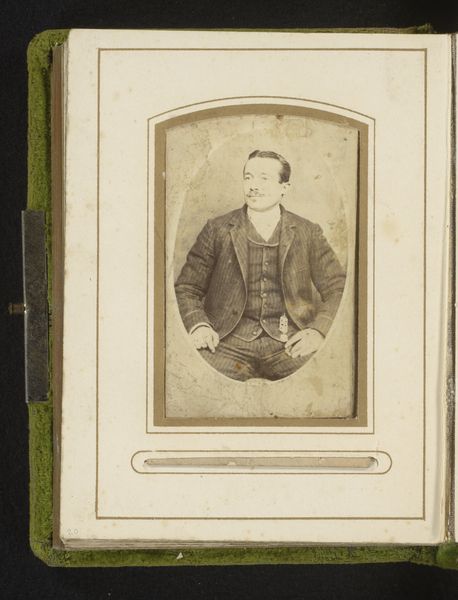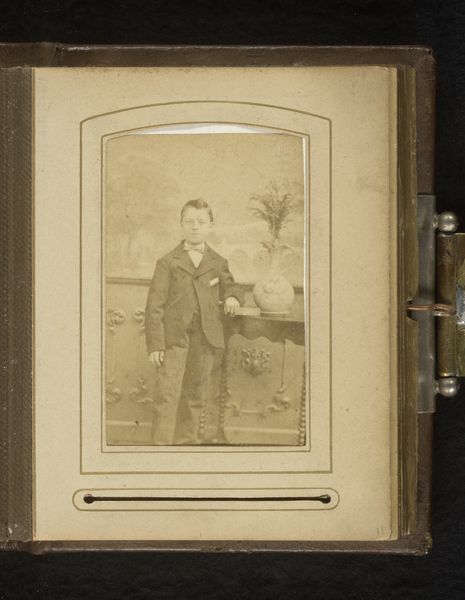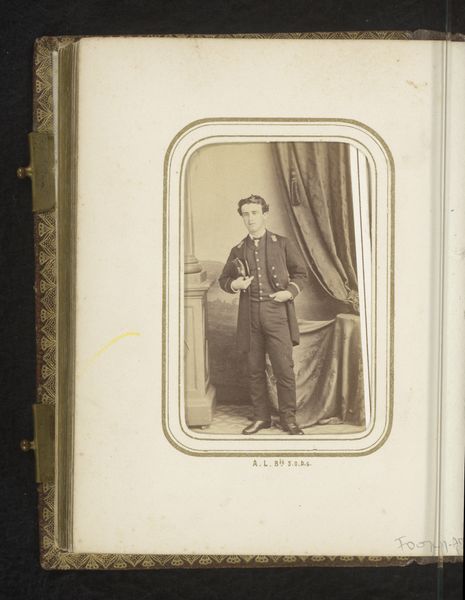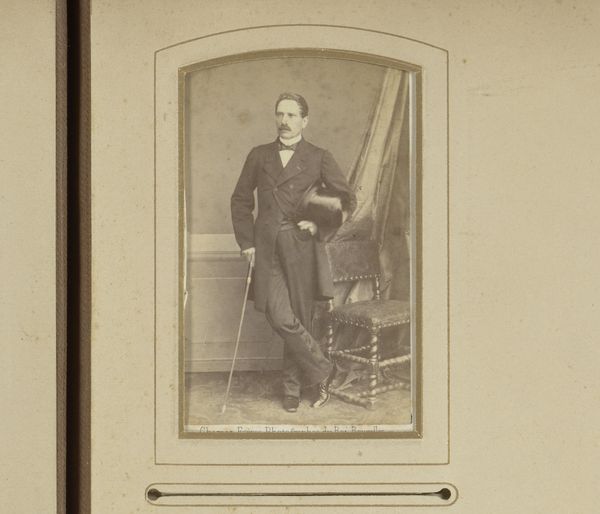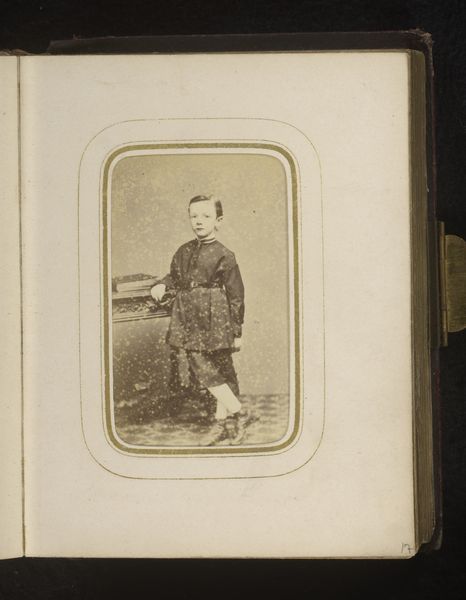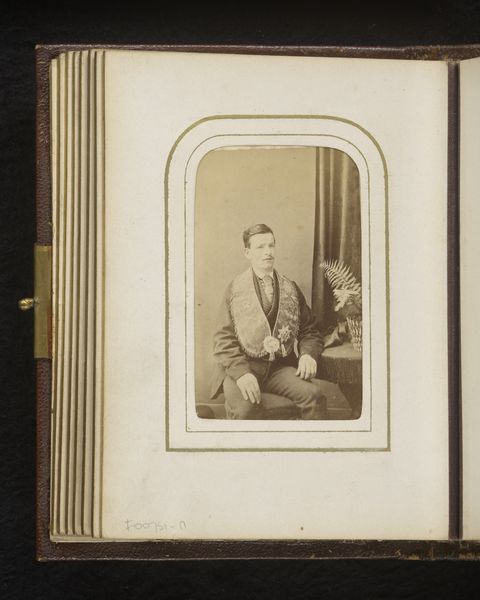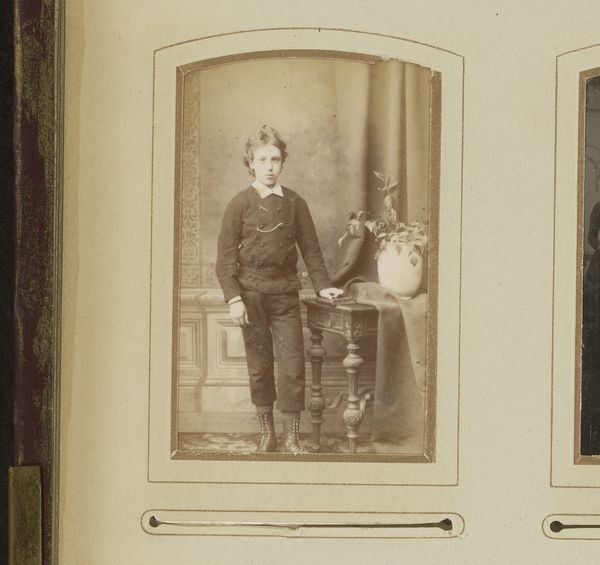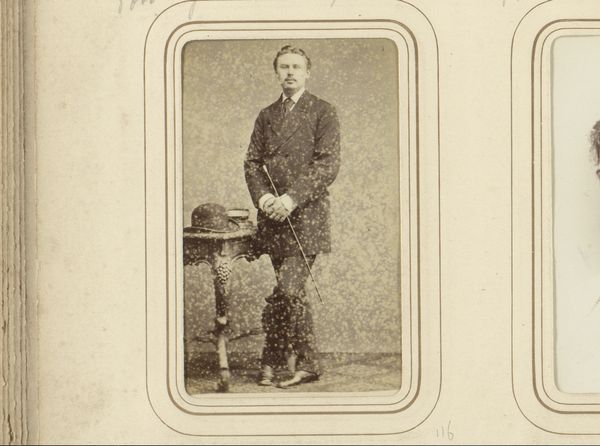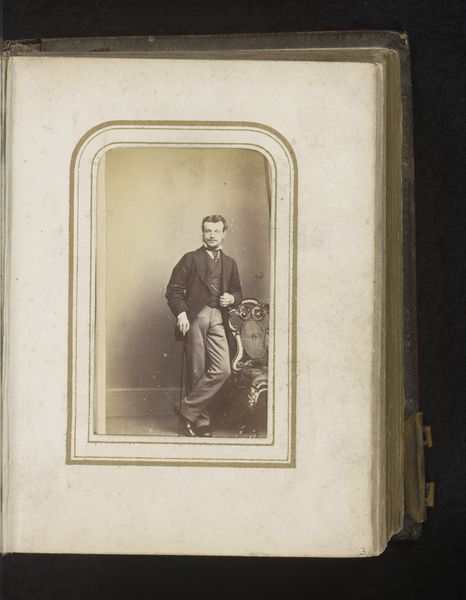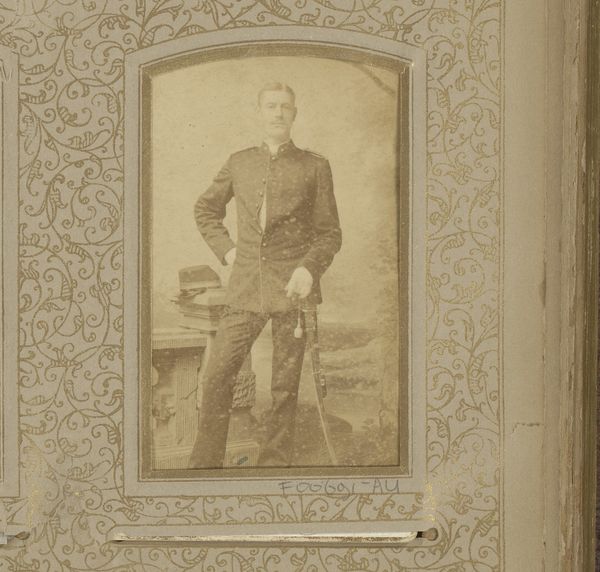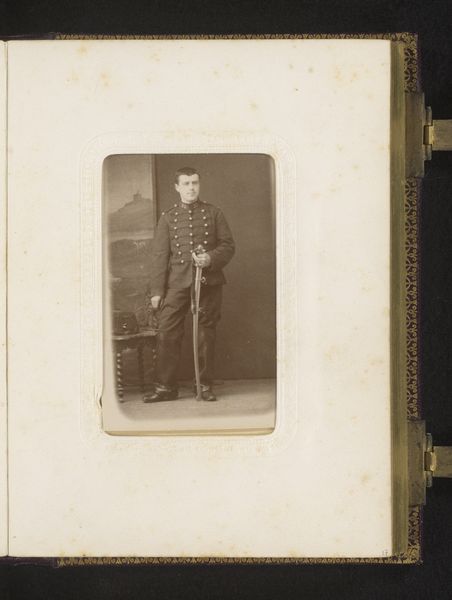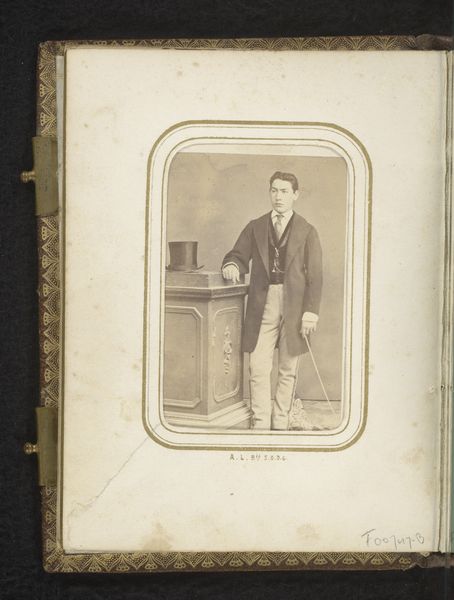
#
aged paper
#
toned paper
#
aged
#
vintage
#
antique
#
sculpture
#
unrealistic statue
#
19th century
#
watercolor
#
statue
Dimensions: height 84 mm, width 52 mm
Copyright: Rijks Museum: Open Domain
Curator: The melancholic weight of this faded photograph really strikes me. Editor: This is a work entitled "Portret van een staande jongen met viool in de hand," attributed to Ed. Radermacher, and thought to date from sometime between 1863 and 1890. Curator: The image composition, with the central figure framed against a classic studio backdrop, produces a wonderfully static effect. The tones throughout suggest a long exposure to the atmosphere; note, especially, how it's preserved in this striking artifact, its physical deterioration now part of its inherent beauty. Editor: It's printed on what was once toned paper, now aged, and we can infer something about studio practices from the very presence of this artifact. The paper itself bears witness to particular modes of labor and the chemical processes used at that time for photographic printing. There's labor in every stage of its creation, from papermaking to development. Curator: I am struck by the balance within the picture plane; it has symmetry, clearly defined thirds and perfect contrast between shadow and light which shapes the subjects physiognomy. These structural principles work towards conveying youth frozen in this one significant pose. Editor: And look closely; we are offered insights into that youth's material life; not only the instrument, but also his suit. Its craftsmanship and detailing suggest something about class and social aspirations within that particular era. It’s not just art; it's a historical document about production, materiality and consumption. Curator: Perhaps. Yet, the work speaks profoundly through its formal properties. The artist understood the communicative potential of light, form, and composition, crafting an image that persists regardless of our understanding of its initial creation. It remains an aesthetic study first. Editor: But dismissing the conditions of production means losing sight of what shapes representation itself, you understand? I believe we must consider all elements to create complete historical consciousness. Curator: And so, the art object becomes more multifaceted with continued critical interrogation. Editor: Precisely. And it pushes us toward a fuller awareness of our interconnected histories, no?
Comments
No comments
Be the first to comment and join the conversation on the ultimate creative platform.
